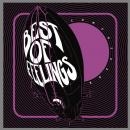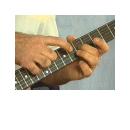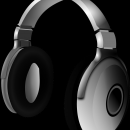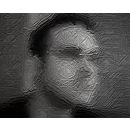Nada que no se haya contado antes, pero seguramente interesará a completistas.
Stanley, Bob. Yeah! Yeah! Yeah!: The Story of Pop Music from Bill Haley to Beyoncé escribió:
— 10 —
Act Naturally:
The Beatles In January 1964 the Beatles left London for Paris. Even at the height of Beatlemania, with the world at their feet, they acted like hormonally challenged schoolkids, badgering manager Brian Epstein to arrange a tête-à-tête with Brigitte Bardot. They had to make do with playing support to local blonde pinup Sylvie Vartan instead—the last time they would play second fiddle to anyone—and would recall with forgetful bemusement how, strangely, the audience was largely made up of frothing boys.
The group were holed up in the George V Hotel. In a few days they had to write enough songs for the soundtrack of what became A Hard Day’s Night, so they had a piano installed in their suite. On a solitary day off they were required to record German-language versions of their two biggest hits, “She Loves You” and “I Want to Hold Your Hand”: with an hour to spare at the end of the session they knocked out a new Paul McCartney song, “Can’t Buy Me Love.” Ten days later, the residency completed, and with thirteen new songs in the bag, they left Paris to spend a day in London before leaving for New York, where “I Want to Hold Your Hand” had just broken all records by climbing from seventy-three to one on the Billboard chart in just two weeks. It all happened that quickly, that simply.
John Lennon was then twenty-four, Paul McCartney twenty-one. Seven years earlier they had met at Woolton church fete in a leafy part of south Liverpool and quickly formed a skiffle group called the Quarrymen; three years later, now with guitarist George Harrison and playing as the Beatles, they were dressed in leathers, performing hard-edged rock ’n’ roll at all-night shows in Hamburg strip clubs. By the tail end of 1962, with drummer Ringo Starr having just joined, their debut 45, the wobbly “Love Me Do,” with its slight air of seafaring roughness, nudged into the UK Top 20. The following Christmas they were the biggest pop act in Britain. A few weeks into 1964 and they were the biggest in the world: their appearance on The Ed Sullivan Show on February 9, 1964, was possibly the most significant cultural event in postwar America. Their rise, the scale of it and their impact on society, was completely unprecedented.
The arc of their story, covering the sixties from their Hamburg genesis to a messy, litigious end, couldn’t be improved by a scriptwriter. Even when they were rubbish—large swathes of their Let It Be swansong, for instance—it suits the narrative. As does having their own cartoon series, commissioning artwork from Peter Blake and Richard Hamilton, hanging out with Jayne Mansfield at the Whisky a Go Go, smoking dope in the toilets at Buckingham Palace, Ringo’s plan to open a chain of hairdressing salons when he retired. They are the gang to end all gangs, self-sufficient, witty, and all-inclusive—everybody wanted in and, somehow, everybody could feel a personal attachment to them, could become part of the Beatle world. From any angle, they are the perfect pop group.
And in 1964 everyone loved them. Everyone, that is, except for the people they admired most—the writers on Broadway and the girl groups. In two ways, they killed the careers of their heroes. The first two Beatles albums had included a number of cover versions—two Shirelles songs (“Baby It’s You,” “Boys”) were on Please Please Me, as was Goffin and King’s “Chains,” originally recorded by the Cookies—but A Hard Day’s Night was fully self-written, something that was pretty much unprecedented in pop. By becoming entirely reliant on their own material (indeed, having enough spare hits that they could score number ones with cast-offs like Peter and Gordon’s “A World without Love” and Billy J. Kramer’s “Bad to Me”) they negated the need for outside songwriters; the Brill Building soon felt the chill. Second, the British acts who broke through in the Beatles’ wake would similarly record girl-group songs by the Shirelles (Manfred Mann’s “Sha La La”), the Cookies (Herman’s Hermits’ “I’m into Something Good”), Mann and Weil (the Animals’ “We’ve Got to Get Out of This Place”), and Goffin and King (the Rockin’ Berries’ “He’s in Town”). Without exception, the UK-produced cover version became the bigger hit—there was a worldwide appetite for all things English.
This was hardly the Beatles’ fault. What they reintroduced to pop, and what the emotional machinery of the Brill Building lacked, was the blatant sex and racing-heart noise that pre-army Elvis had provided. There was a sense of excitement and futuristic energy you could feel everywhere, the sure knowledge that a line was being drawn in history. And, just as Elvis had in ’56, they created a new generation gap. Pre-rock. Pre-Beatles. Overnight, the Brill Building’s craft, sweat, and toil was part of the past. The Beatles’ unscripted naturalism turned the lights on, and Broadway’s neon suddenly looked rather cheap.
If you had to explain the Beatles’ impact to a stranger, you’d play them the soundtrack to A Hard Day’s Night. The songs, conceived in a hotel room in a spare couple of weeks between up-ending the British class system and conquering America, were full of bite and speed. There was adventure, knowingness, love, and abundant charm.
Every stage of the Beatles’ career had a complementary drug: speed (their Hamburg and Merseybeat period), cannabis (the sleepy Rubber Soul), acid (Revolver and Sgt. Pepper) and heroin (Lennon’s crack-up on The White Album). With A Hard Day’s Night, the drug was adrenaline. The world loved them, and the world was their plaything. Ringo had an expression, “Be here now,” which they consistently adhered to. Listening to “If I Fell,” the Everly-styled ballad in the movie, Lennon and McCartney are simultaneously playing to and teasing their newly acquired female fans, sounding far too vulnerable for Hamburg-hardened hellraisers, yet entirely believable. In the hands of anyone else, “If I Fell” (its message: yes, girls, we are available, and ever so fragile) would sound simpering, patronizing—the Beatles make it sound like an act of generosity.
They could do this because they were pop fans, happy to raise the profiles of other artists, thrilled to be part of pop’s big picture. They believed in some continuity in pop—through rock ’n’ roll and the Brill Building and girl-group scenes to the nascent Motown—and when they first arrived in the States they were keen to spill the beans on their inspirations. George would gladly admit that Carl Perkins was his primary influence, lending a country-and-western flavor to “I’ll Cry Instead”; John puffed up the Tamla Motown stable, whose “Hitch Hike” informed the tough “When I Get Home.” From the vantage point of Britain, they had the distance to see pop’s progress, its writers and musicians, legends and lost heroes, with a bird’s-eye view; they wanted to share their knowledge with the American kids at the eye of the storm. This was quite new. They also knew what they didn’t like, which was the homegrown, panto-playing Cliff Richard and the Shadows.
Between “Move It” in 1958 and “Please Please Me,” the Beatles’ breakthrough Top 10 hit, Cliff and his backing group had amassed twenty-nine Top 10 hits in Britain, including twelve number ones. They were modern pop, but they worked within older showbiz rules. They covered their working-class upbringing by speaking clearly with accent-free, class-free vowel sounds, slightly mid-Atlantic—northerner Hank Marvin and southerner Cliff Richard had almost identical speaking voices, presumably copied from Hollywood. It wasn’t the voice of the BBC, of the Establishment, and in this respect they were originals, paving the way for TV presenters and politicians to come. The Beatles, though, proudly wore their accents on their sleeves, and—unlike the Shadows, with paymaster Cliff—were entirely democratic. At first glance they even looked the same, like pop’s own Maoist army. If anything, they played up their Scouseness (speaking through their noses, turning every question into a gag) to challenge the BBC norms: in 1963 this alone spelled anarchy.
The Beatles moved too fast to ever become establishment, no matter how ripe the praise in The Times or how many medals the queen gave them. They gave the impression of being one step ahead of everyone, of being in on some cosmic pop secret. A Hard Day’s Night itself starts with a chord (G eleventh suspended fourth) that seems to signal a fresh start, a call to arms—that was then and this is NOW; in December ’64 they prefigured ’65’s penchant for feedback with the buzzing fly intro to “I Feel Fine”; at the start of ’67 came the entirely new sound (a Mellotron flute, it transpired) on the opening moments of “Strawberry Fields Forever” that introduced the world to English pastoral psychedelia.
The secret was nothing more than their fandom. Lennon, McCartney, and, to an extent, Harrison were cultural omnivores. “I Should Have Known Better,” with its wheezing harmonica, showed prescient leanings toward The Freewheelin’ Bob Dylan, an album George had picked up during their Paris trip; the limpid minor-key melancholy of “And I Love Her” recalls Georges Delerue’s score for Jules et Jim (a film the art-loving, romantic McCartney would surely have taken his upmarket girlfriend Jane Asher to see). It’s safe to say hardworking beat groups like Gerry and the Pacemakers, the Swinging Blue Jeans, or even the Hollies would not have incorporated such un-pop, deviating influences into their next potential hit-parade smash. The Beatles, through their appetite for cultural newness and apparent fearlessness, seemed to speak a future language.
It’s easy to take this all-encompassing sense of adventure for granted when you read the Beatles story for the umpteenth time. In 1962 Adam Faith’s gently midbrow appearance on BBC TV show Face to Face had caused a media sensation. They had expected a grunting dullard, a rock ’n’ roll caveman—that was how modern pop was regarded outside of coffee bars and school playgrounds in 1962—but instead got a softly spoken charmer who had read The Catcher in the Rye. By 1966 pop had moved so far in the public estimation that it was the main event of British art, and that was, no question, down to the Beatles. This final push occurred in ’66, when the Beatles—bruised by pyres of their product in the Deep South, battered by Imelda Marcos’s police—gave up touring and spent more time using the studio as a source of adventure. Straight away, they turned out the kaleidoscopic Revolver. It would be disingenuous to claim that you can hear the epochal soundscape of “She Said She Said” or “Rain” in anything on A Hard Day’s Night, yet two tracks epitomize the future Lennon and McCartney directions.
“You Can’t Do That” has a serrated sound from its opening line: “I’ve got something to say that might cause you pain.” The relentless cowbell and vicious guitar break make for an enjoyably sadistic experience that (again) looks toward the bristling aggression of the Kinks’ opening brace of hits—“You Really Got Me,” “All Day and All of the Night”—later in the year. Lennon could use this aggression to rock hard (“Everybody’s Got Something to Hide Except Me and My Monkey”) or to sound spiteful (“Run for Your Life”), but later he turned it on himself (“Yer Blues,” “Cold Turkey”). The flip side of his nasty streak was the reflective apology (“Jealous Guy”). Either way, the listener wins.
On “Things We Said Today,” the wide-eyed sweetness of McCartney’s melody and his pillowy vocal explain why children think of him as the cute Beatle, and why anyone with a low tolerance for sugar can’t take him. Beautiful, tricksy but catchy tunes came so easily to him that—on “Lady Madonna,” or solo efforts like “Wild Life”—it was sometimes clear he really wasn’t trying very hard, which wound up detractors and fans alike. Still, the one-note riff on “Things We Said Today,” the pointed tambourine shake, the sudden swing from goo to grit (“Me, I’m just the lucky kind, love to hear you say that love is love”), all of this adds up to a song where not a second is wasted. They may not have had Phil Spector’s legions of musicians at their disposal in 1964, but the Beatles knew how to fill every moment of a record with heart-tugs and hooks.
“I’ll Be Back” closes A Hard Day’s Night on a strangely downbeat note. A sense of home, whether spiritual (“There’s a Place”) or physical (“Penny Lane”), would run through the Beatles’ catalogue; “I’ll Be Back” shows their fear of displacement and sense of loss as their lives were becoming irrevocably changed. It would be followed by the more celebrated “In My Life,” “Strawberry Fields Forever,” and “Penny Lane,” and later aberrations like “Maggie Mae” and “The One after 909,” when the group revived Liverpool songs of their youth in a forlorn attempt to plot a course home and save their listing ship. It also hints at insecurities that were screamed out the following year in “Help!” The lyric is self-defeating, resigned to its loneliness (“You know if you break my heart I’ll go, but I’ll be back again”), while the chords shift uncertainly. Throughout, its nasal harmonies are very English, steeped like a teabag in Merseyside melancholia. The Beatles may sometimes seem emotionally buttoned up alongside their peers the Beach Boys, but “I’ll Be Back” is confused, resigned, mature. Just a few months after “I Want to Hold Your Hand,” this was their goodbye to the initial heady rush of Beatlemania and it remains one of their most affecting and underrated songs.
To keep a lid on their insecurity and the madness around them, the Beatles had an extraordinarily small but tight team. Manager Brian Epstein had ditched their Hamburg leathers, put them in suits, and got them on TV; Derek Taylor was their equally well-spoken, dashing press officer; Neil Aspinall began as their van driver and became their personal assistant; Mal Evans was part bodyguard, part tour manager. And that was pretty much it. This made decision-making simple, and kept the group flexible. With Epstein’s death in 1967, things quickly got out of control. The group’s ambition—on the back of Sgt. Pepper’s international acceptance as a work of art—extended way beyond creating another pop record in a Technicolor sleeve. They were now at the forefront of a cultural revolution and, with energy to burn, set out on an altruistic mission named Apple to help discover and nurture the next Beatles or Burroughs, Bresson or Brando. Alarmingly, it seemed that they were thinking, “We’re not so special, we’ve just had the breaks.”
First they opened a clothes shop, the Apple Boutique, in late ’67; it closed within a year, laid waste by shoplifters. They started an electronics division of their corporation which, unfortunately, had no connection with the omnipresent twenty-first-century company of the same name. Simply, they were out of their depth and had naively opened the doors they had kept so tightly shut in their early years. Nobody was really in charge. People were walking out of the Apple premises with typewriters; Hells Angels were sleeping on the office floor.
Apple had been launched in May ’68, that most optimistic, revolutionary, and chastening of months, and by the year’s end both Starr and Harrison had tried to quit the group, then been begged to stay. The end came, surreally, with Phil Spector overdubbing a demo of a McCartney song called “The Long and Winding Road” with his usual bells and whistles. It became their last single. McCartney hated it and sloped off. “We’re all talking about peace and love,” he told the Evening Standard, “but really, we’re not feeling peaceful at all.” With the Beatles’ demise, the sixties, an entire era, came to a dead stop.
So why them? Why not Del Shannon or the Four Seasons or the Beach Boys? It seems like a daft question, but it’s legitimate. The only answer is that the Beatles were, literally, miraculous. They seemed to have some force protecting them, steering them—of the thousands of photos taken, there are none where one of them has his eyes closed, or is gurning a little. Not one. A few years ago someone found a few snapshots they had taken of John Lennon in 1968. It was a gray, muggy English summer day, and he was doing the most nondescript thing in the world. He was at a ferry terminal on the Isle of Wight, on his way to see his aunt. The whole thing sounds like an Alan Bennett yarn. And yet Lennon still looked incredible. He looked like a Beatle.
One story sums up their magical quality. On June 30, 1968, at the height of Apple optimism, Paul McCartney and Derek Taylor were driving back to London from Saltaire, Yorkshire, where they had been recording the Black Dyke Mills Band on a song of Paul’s called “Thingummybob.” They were in Bedfordshire. Let’s pick a village on the map and pay it a visit, said Beatle Paul. He found a village called Harrold, which they found quite hilarious, and turned off the A5. Harrold turned out to be a picture-perfect village, with a picture-perfect pub at its heart. The pub was closed, but when the villagers saw there was a Beatle at the door they opened it up. Soon the whole village was in the pub, listening to Paul McCartney on the pub piano playing the as-yet-unreleased “Hey Jude.” Every Harrold resident danced and sang along, and the revelry went on until 3 a.m. It was beautiful, perfect, spontaneous, and full of love. Harrold. You couldn’t make it up.
When the Beatles story ended in 1970, they could get their individuality back, be themselves for the first time in their adult lives instead of being a Beatle. And the magic cloak of protection seemed to vanish immediately—John was now coarse and self-pitying, Paul uptight and catty, George sat cross-legged, smug behind his beard, and Ringo drank for England while singing maudlin country from his barstool. They had always tried to tell us, and we finally had to face the truth: they were only human.
He marcado mis subrayados del capítulo (tengo ese vicio), varias cosas que me parecen relevantes. La que más es que con los Beatles se acabó lo de los álbumes llenos de covers y se inició la época del álbum y los canta-autores que dura aun hoy. Que eran verdaderos devoradores de cultura popular en general, no sólo R&R o pop, si no prácticamente cualquier cosa y que eso se incorporaba a sus composiciones. Y finalmente que tenían una flor en el culo, los protegía algún santo o bien tenían un encanto fuera de lo común que les hizo conectar con el público de una forma que probablemente nunca haya vuelto a ocurrir.
Nada nuevo pero por si a alguno le interesa. El libro es este, está en español pero suelo optar por la versión inglesa que es más barata










